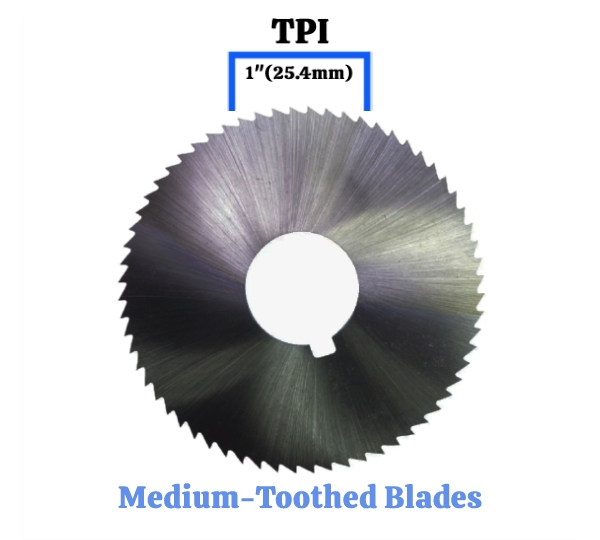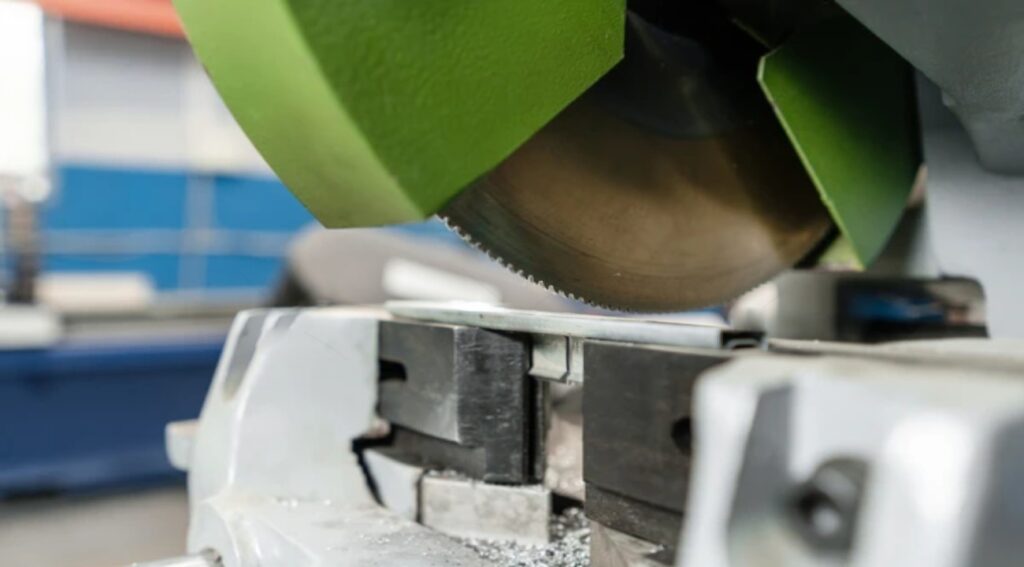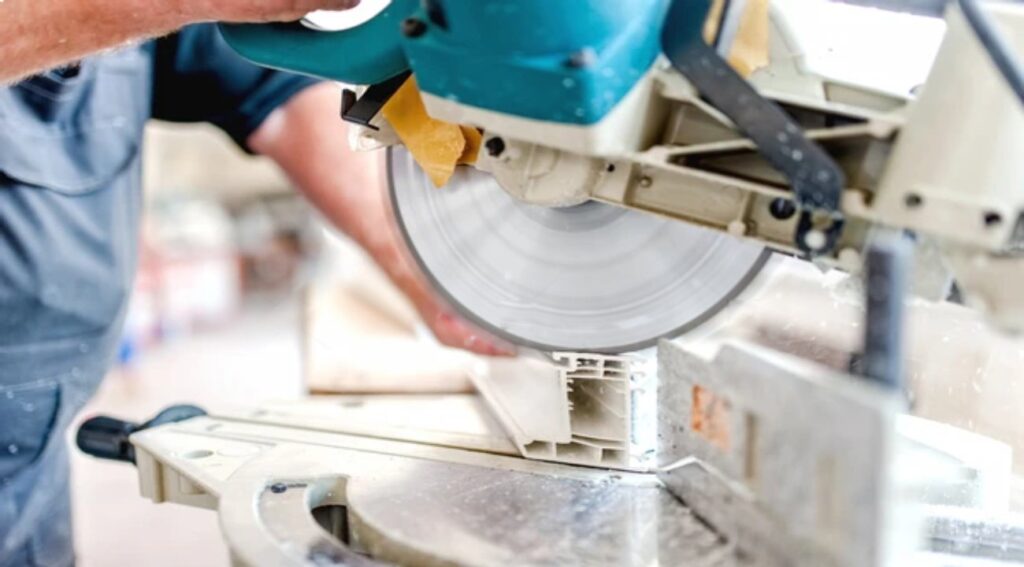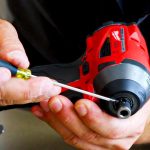Table of Contents
“The number of teeth a blade has per inch is called TPI”. This is a crucial factor to consider when choosing what kind of blade you want to use and what material you want to cut. For instance, if you want to cut through wood and other soft materials, then a TPI of 6 to 20 would be ideal. On the other hand, if you are planning to use your blade to cut tougher materials like metal, then you will need a TPI between 14 to 36.
As a rule of thumb, the higher the TPI count, the cleaner the cut. And if the TPI is low, the finish will be much rougher. On the other hand, if the TPI is high, then more time will be needed to complete the job and vice versa. You should keep these aspects in mind before deciding which saw blade to go for.
With that said, let’s dive into everything you should know about saw blade TPI.
Categories Of Toothed-blades
With respect to TPI, saw blades can be categorized into three types. Below, we have outlined what they are.
Coarse-Toothed Blades
Course-toothed blades usually have a TPI between 3 to 7. They have fewer teeth per inch and tend to have larger protrusions with deeper gullets. That means these blades are capable of cutting and removing more material with each stroke. Moreover, because of their design, they are capable of cutting much faster. But the chance of you ending up with a rough finish is much greater with these blades as they cut more aggressively.

Medium-Toothed Blades
Blades with a TPI of 7 to 10 are called medium-toothed blades. They are used to cut wood and perform other general-purpose activities. These blades can be used for both fast, aggressive cutting, as well as slow, precise cutting. Hence, handymen can use these blades to cut through their workpieces fairly quickly without compromising much on the finishing.

Fine-Toothed Blades
Blades with a TPI of more than 10 are known as fine-toothed blades. The teeth tend to be much smaller with shallower gullets. This results in less material being cut with each stroke. So, if you want to make deep cuts, then you will need significantly more time. On the bright side, the finish you get with these blades is much more pristine. And you don’t have to worry about them tearing away the material’s fibers.

- So, What Kind of Finish Do You Want?
If you want a clean finish, then you will need a blade that has more than 10 TPI, or a fine-toothed blade. But if you don’t care much about the finish and just want to get the job done as soon as possible, then a course-toothed blade should be ideal. However, if you want more control over the kind of finish your blade produces, then you can opt for a medium-toothed blade.
Does Length Affect The TPI Of A Saw Blade?
“Yes, the length of a saw blade does have an effect on TPI. For instance, a 6-inch blade with a TPI of 12 will produce a much finer finish than a 12-inch blade with a TPI of 12.”
Generally, saw blade lengths range from 3” to -12”, where 6” and 9” are the most commonly used. Short blades are comparatively a lot more rigid than long blades. Hence, they are able to produce straighter cuts. On the flip side, long blades are more flexible and they can dissipate more heat as they have a larger surface area. Also, make sure to get a blade that is slightly longer than the thickness of the material you are working on.
Does Blade Material Affect The TPI Of A Saw Blade?
“No, blade material does not affect the TPI of a saw blade. However, they do determine how long the teeth of the blade will last before becoming blunt.”
Saw blades are made with a variety of different materials. Some of the most popular ones are made from high-carbon steel, high-speed steel, bi-metal, carbide tipped, carbide grit, diamond, etc. Depending on the material you are working on, you will need to determine which blade would be the best.
For example, if you want to cut soft wood, plastics, particle boards, etc., then a high-carbon steel blade should be good enough. But, if you want to work on denser materials like cast iron, stainless steel, and high-strength alloys, then you will need to use carbide-tipped saw blades. Every blade material has a purpose, and it is important that you have a good idea about what each can do. Otherwise, if you try to use a high-carbon steel blade to cut metals, then there is a huge possibility that it will break almost immediately.
What Are The Ranges Of TPI?
By now, you should have an idea that different saw blades come with different TPIs. In this section, we are going to be taking a closer look at the different ranges of TPI and what they are used for.
5-8 TPI
Blades with a TPI between 5-8 are perfect for cutting wood. The low TPI count gives the blade a firm grip on the material and lets you cut through them quickly and efficiently. Woodworkers prefer to use blades like these to cut branches and trees as they usually want to complete the task as soon as possible and do not necessarily care about a rough finish.

8-14 TPI
You can use blades with 8-14 TPI to cut through wood and some light metals. The finish that you get from these blades is not as rough as 5-8 TPI blades. So, you will get a much smoother finish with a balanced cutting action.

14-24 TPI
Most 14-24 TPI blades are designed to cut through metals and other dense materials. Although they take longer to cut through, you will get the best finish as they leave no rough or jagged edges.

What Does 10/14 TPI Mean?
- You might have stumbled across blades with a TPI of 10/14 while searching for the best saw blade for your work. But what does 10/14 TPI mean?
“Well, a 10/14 TPI blade has 10 TPI on one end and 14 TPI on the other. The side with 10 TPI is meant for fast-cutting action, while the other is for making fine cuts. Blades like these are called a combination or variable TPI blades.”
- Another common question that we get all the time is – what does 14/18 TPI mean?
“Similar to 10/14 TPI blades, 14/18 TPI blades are also combination blades. They have 14 TPI across one half of the body and 18 TPI across the other. The cutting action of these blades is much slower than that of 10/14 TPI blades, but they produce a better finish in comparison.”
10 TPI vs 14 TPI vs 24 TPI: Key Differences
Blades with a TPI of 10, 14, and 24, are the most common in the market. So, let’s compare all of them and see how they stack up against each other.
| Teeth per inch (TPI) | Use Case | Finish |
|---|---|---|
| 10 TPI | Wood | Rough |
| 14 TPI | Thin Metals | Balanced |
| 24 TPI | Thick Metals | Fine |
How To Know Which TPI You Need?
With so many saw blades with varying TPIs, it can be quite difficult to determine which one you should get. Luckily, we will tell you exactly which blade you will need for what purpose.
Matching the correct tooth size with the material you are cutting is essential to get the maximum blade life and efficiency from your reciprocating blades. The general rule is that at least three teeth should be in contact with your workpiece at all times. However, the optimal number is 6 to 12. If the teeth are too large, then there is a chance that they may become stripped. On the other hand, if they are too small, then they are likely to become dull.
- Here is a Table That Outlines What Tpi You Need With Respect to the Thickness of the Material.
For Standard Blades
| TPI | Thickness (in inches) |
| 10 | More than 1/2 |
| 14 | 1/4 to 1/2 |
| 18 | 1/8 to 1/4 |
| 24 | Less than 1/8 |
For Combination Blades
| TPI | Thickness (in inches) |
| 10/14 | More than 1/4 |
| 14/18 | 1/8 to 1/4 |
| 20/24 | Less than 1/8 |
Here Are a Few Tips That Should Help You When Choosing the Correct Tpi.
- More TPI means a much smoother finish.
- A high TPI count can improve performance when cutting through hard materials.
- Make sure to have at least 3 teeth in contact with the cutting material to get faster cutting.
Frequently Asked Questions
Q: What is the best TPI for cutting wood?
Blades with a TPI range of 6 to 20 are ideal for cutting wood. For faster cutting action, get a TPI that is around 6, whereas for a cleaner cut, go for blades with a TPI of around 20.
Q: What is the best TPI for cutting metal?
A TPI of 18-20 is the best for cutting thin sheets of metal. However, you will need a TPI of 14-18 if you want to work on thicker metals.
Q: What is the best TPI for cutting stainless steel?
Your saw blades should have a TPI of at least 8 if you want to cut through stainless steel. But as stainless steel is tough to cut, you will also need a carbide-tipped blade in order to effectively slice them apart.
Q: What is the best TPI for cutting aluminum?
Aluminum requires a blade that has a TPI of 8-10. However, if you want to cut through thick aluminum materials, then you will need 10-14 TPI.
Q: What is the difference between 14 TPI and 18 TPI?
There are a few differences between 14 TPI and 18 TPI blades, but they are not very significant. 18 TPI blades produce a much smoother finish than 14 TPI blades. Whereas 14 TPI blades can cut through objects slightly faster than 18 TPI blades.
Final Verdict
By now, you should have a solid idea about what TPI is on saw blades. You need to determine the correct TPI in order to figure out which materials you can cut with it. Of course, that is not to say that blade material, thickness, and length are not important. But without the correct TPI, there is a high chance that you could ruin your workpiece or your blade.










Leave a Comment